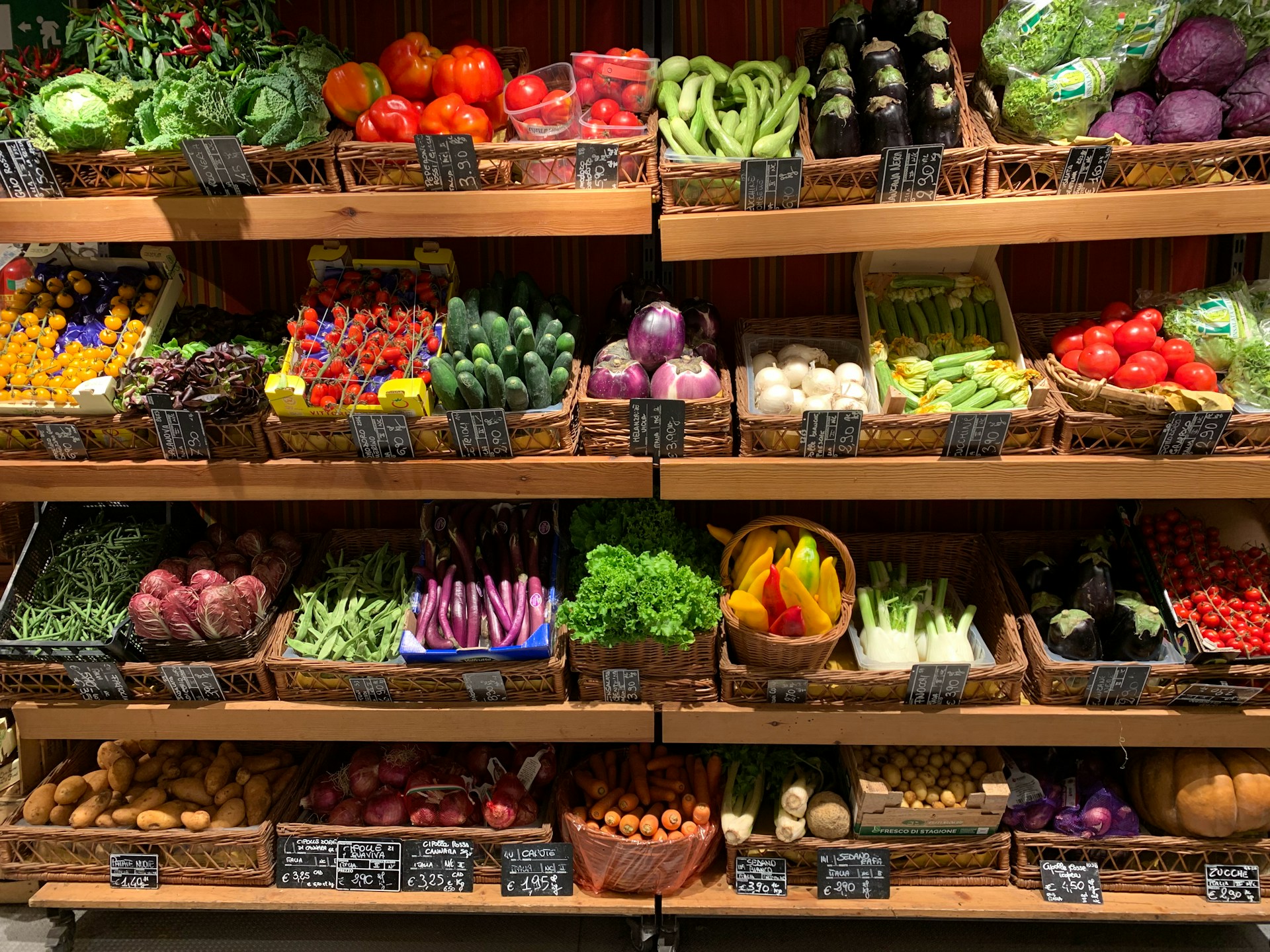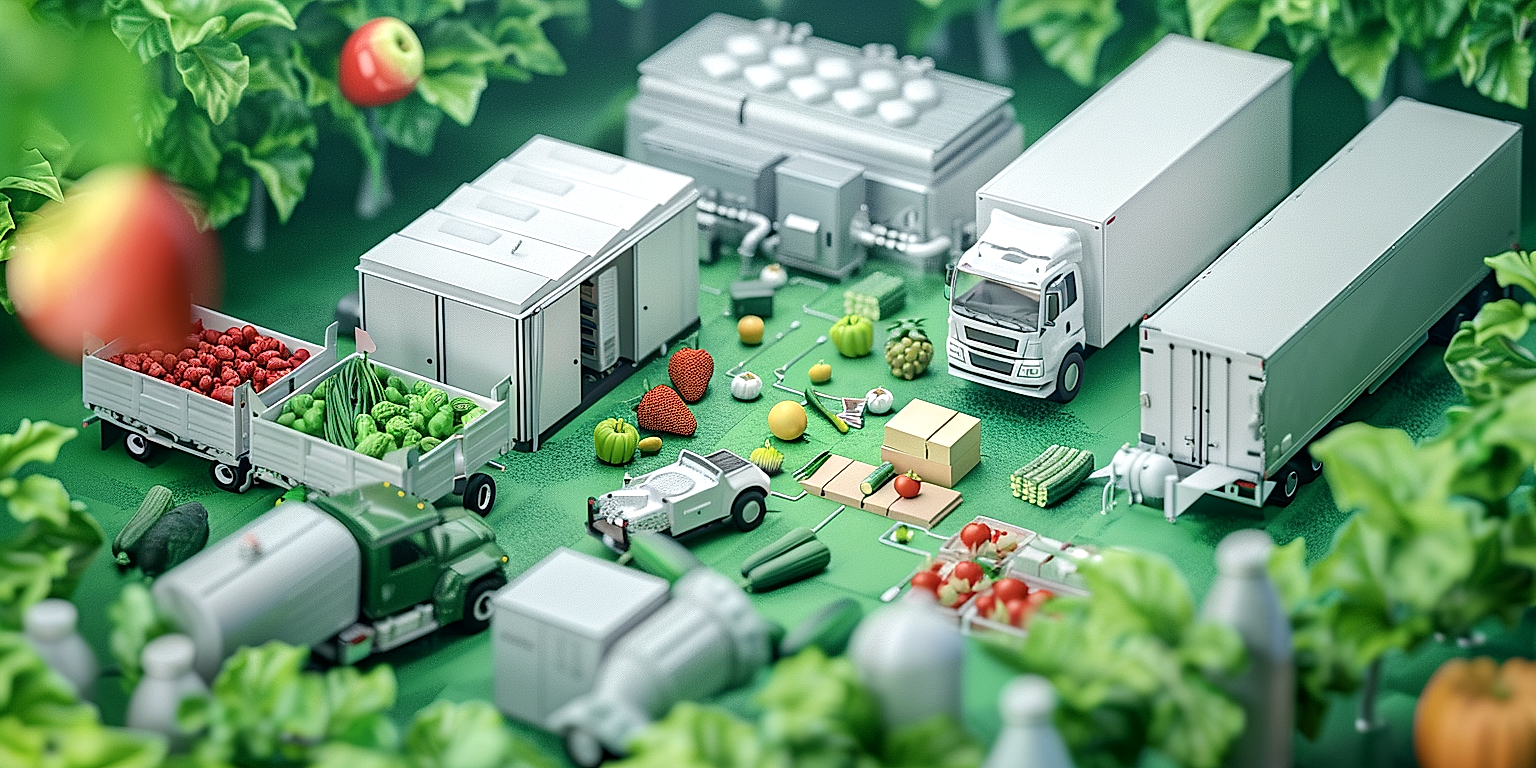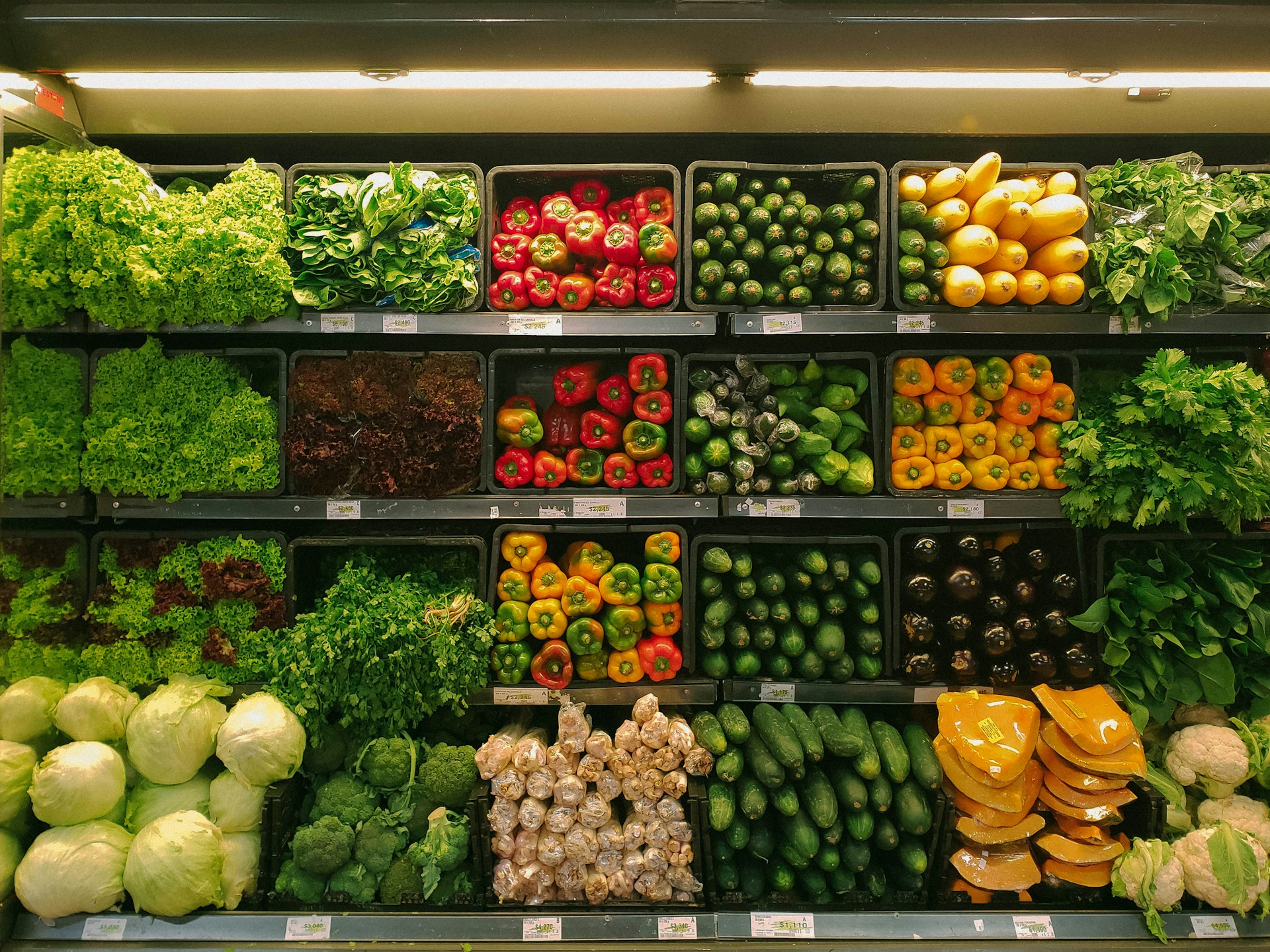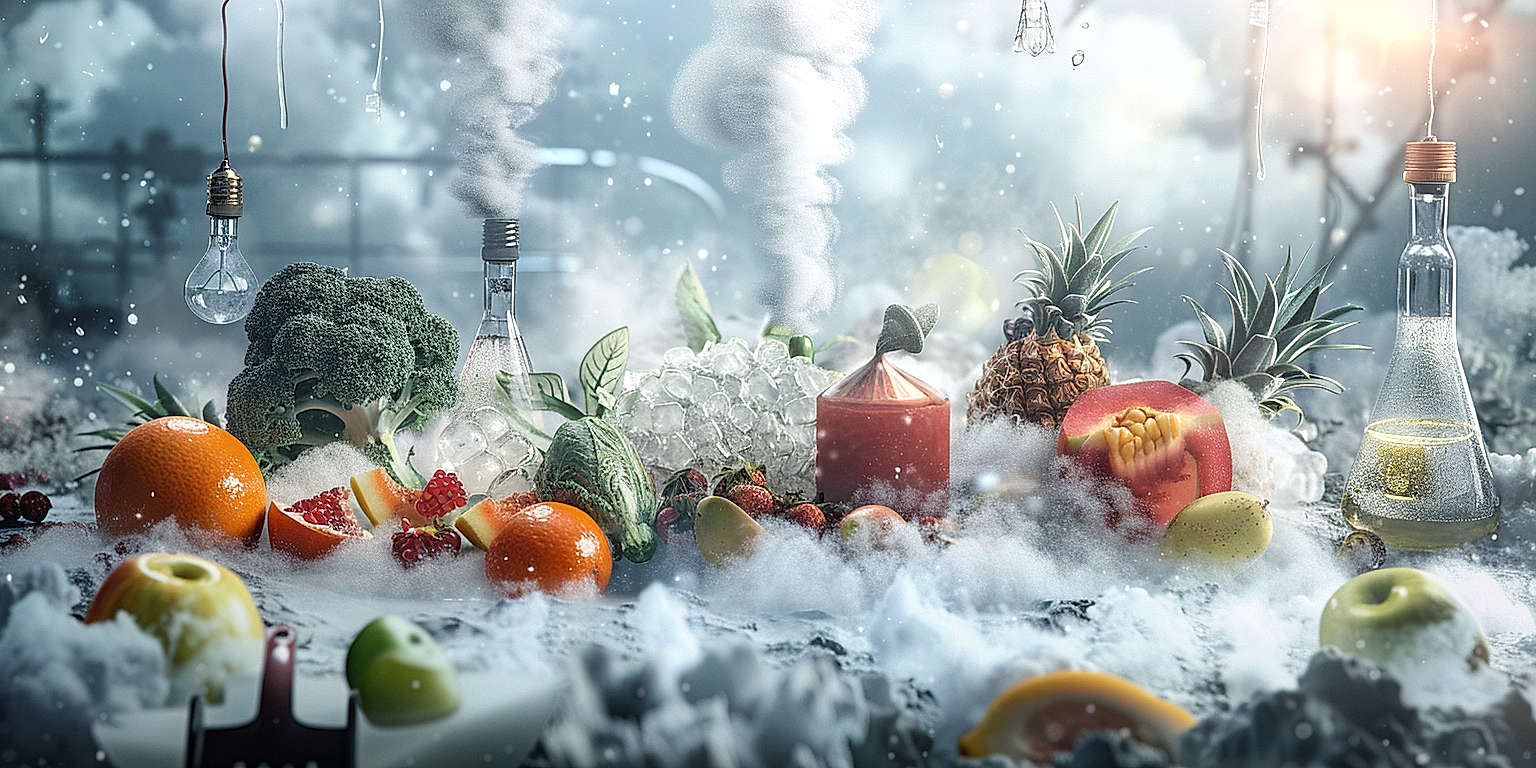Ensuring the longevity and freshness of produce within the cold chain distribution system is pivotal in any agri-food supply chain.
As such, various solutions have been sought to proactively address this challenge.
Striking a balance between efficiency, cost-effectiveness, and product integrity is no easy task, though.
Technological advancements and novel methodologies have emerged as beacon tools in this space.
This discussion aims to delve into these developments, exploring the core themes of shelf life extension solutions within the sphere of cold chain distribution.
It stands to offer an understanding of current practices, their effectiveness, and potential future innovations.
Contents
Shelf Life Extension Solutions In Produce Distribution’s Cold Chain
1. Advanced cooling and refrigeration systems
Effective produce preservation heavily relies on the integration of advanced cooling and refrigeration systems.
These systems are crucial in maintaining the quality, freshness and shelf life of fruits and vegetables during transport and storage.
The use of modern cooling units contributes significantly to reducing the loss of post-harvest goods by providing a controlled environment.
Remember, the shelf life extension starts immediately after harvest and continues throughout the distribution chain.
Therefore, cooling systems have a crucial role in ensuring produce reaches consumers in a fresh and nutritious state.
In fact, depending on the type of produce, prompt and effective cooling can extend the shelf life by several days or even weeks.
Refrigeration slows down the metabolic processes of fruit and vegetables, helping to maintain their freshness and nutritional quality.
Moreover, advanced cooling systems maintain humidity levels which is necessary as various types of produce require different humidity levels.
On a technological level, recent advances have fostered the implementation of smart refrigeration systems that go beyond simple temperature and humidity control.
These units incorporate new technologies capable of monitoring and adjusting environmental conditions in real-time, thereby offering optimal storage for different types of produce.
Consequently, these refrigeration systems help stabilise post-harvest quality, slowing down deterioration and decay processes at a controlled rate.
Investing in advanced cooling and refrigeration systems ensure that produce distributors not only limit food waste but also maximise their profits.
It is important to note that the efficiency of these systems depends greatly on correct calibration and ongoing monitoring.
For instance, the temperature levels set during refrigeration can be determined by the type of produce in storage, given that each produce type has its ideal storage temperature.
Emphasis should also be put on regular maintenance checks and updates to cooling and refrigeration equipment to ensure they continue to function optimally.
Considering this, using advanced cooling and refrigeration systems can significantly improve shelf life extension and the overall quality of produce during its journey from farm to retail.
2. Intelligent Packaging Solutions
Intelligent packaging solutions can play a vital role in increasing the shelf life of perishable goods in cold chain distribution.
By ceaselessly monitoring and adjusting the cold chain environment, these systems can optimize the shelf life of perishables.
Improved traceability, monitoring and quality control can all be assured by leveraging the capabilities of intelligent packaging solutions.
There has been considerable work done in the area of smart or intelligent packaging, wherein sensors and indicators can provide real-time information about the condition and safety of the food product.
One of the leading examples of such technology is Time-Temperature Indicators (TTIs) which often take the form of ‘smart labels’ attached to the packaging.
TTIs can provide visual signals when the product has been exposed to temperature deviations outside the prescribed limits, thus ensuring optimal preservation.
Another key intelligent packaging solution are smart biosensors.
These can detect pathogenic microorganisms or biochemical changes occurring in the product due to enzymatic activities or microbial growth, and issue early warnings regarding potential food spoilage.
Driven by advances in nanotechnology, intelligent packaging technologies have started incorporating nanosensors and nano-indicators, further improving the precision in early detection of food quality deterioration.
Radio Frequency Identification (RFID) technology is another hallmark of intelligent packaging solutions.
RFID labels can track real-time location, temperature, humidity and other vital product data, enhancing transparency, traceability and foolproof quality assurance in the cold chain.
Oxygen Scavengers and Moisture Absorbers are another interesting innovation in intelligent packaging, helping combat oxidation and microbial spoilage.
Shock and tilt indicators included in intelligent packaging systems provide data about the handling and transportation conditions of the product.
Intelligent packaging solutions are extremely effective for perishable products requiring precisely controlled conditions, such as fruits, vegetables, meat, dairy and seafood.
While the upfront costs of implementing intelligent packaging systems can be significant, the efficiency gains, waste reductions and improved customer trust can lead to substantial long-term return on investment.
Despite the technological advancements, there is still considerable scope for optimization and evolution in intelligent packaging solutions.
3. Post-harvest treatment with ethylene absorbers
Within the produce distribution’s cold chain, post-harvest treatments play a significant role in preserving the product’s quality and longevity.
An innovative and practical approach to ensure the extended shelf life of produce is through the use of ethylene absorbers.
Ethylene is a natural plant hormone present in a variety of fruits and vegetables, playing a crucial role in accelerating the ripening and senescence process.
This can result in over-ripening and rapid degradation of products, reducing their shelf-life drastically.
So, effectively minimizing the concentration of ethylene in the storage environment can significantly enhance the freshness and durability of the produce.
One of the ways to achieve this is by utilizing specialized ethylene absorbers.
Ethylene absorbers function by attracting and trapping the molecule, thus lowering its concentration in the storage surroundings.
These absorbers can be integrated into packing materials, cold storage units, and even transport containers.
By minimizing the ethylene’s exposure, these absorbers help in reducing the rate of the ripening process, preserving the firmness, color, and overall quality of the produce.
Furthermore, ethylene absorbers are particularly beneficial for co-storage of ethylene sensitive and producing commodities, allowing a wider range of produce to be stored together.
Thus, ethylene absorbers provide a safe and effective solution to extend shelf life without the use of harmful chemicals or complicated processes.
Recent advancements have led to the development of more efficient and cost-effective absorbers that have very low environmental impact.
These can be easily disposed of or even reused, making them a sustainable choice for the produce distribution’s cold chain.
It’s important to note that the effectiveness of ethylene absorbers can be influenced by factors such as temperature, humidity, and the specific type of produce.
Therefore, it’s vital to employ a comprehensive strategy that combines various shelf-life extension solutions for the most satisfactory results.
In conclusion, by effectively using ethylene absorbers as part of the post-harvest treatment, a significant extension in produce shelf-life can be achieved, ensuring fresher, higher quality products reach the consumer.
4. Modified Atmosphere Packaging (MAP)
At the core of shelf life extension methods in the sector of produce distribution, Modified Atmosphere Packaging (MAP) stands as an essential technique worth comprehending in detail.
Modified Atmosphere Packaging is a revolutionary technology that has transformed the way produce is packaged and preserved during distribution.
The principle behind Modified Atmosphere Packaging centers on altering the natural composition of air within the packaging surrounding the produce.
Through this manipulation, the rate of degradation of the produce can be significantly slowed down, extending its shelf life.
This technology essentially tailors the atmosphere within the packaging to the specific respiration needs of the enclosed produce.
In the process of MAP, the ratio of oxygen, carbon dioxide, and nitrogen is carefully adjusted depending on the type of fruit or vegetable being packaged.
By regulating the balance of these gases, MAP capitalizes on the natural respiratory behavior of the produce, thereby helping to maintain its freshness.
For instance, certain produce types like apples and potatoes benefit from lower levels of oxygen and higher concentrations of carbon dioxide.
A major advantage of using MAP over traditional packaging methods is that it does not involve the use of artificial preservatives.
Furthermore, it has a minimal impact on the flavor, texture, or nutritional content of the produce, making it a preferable choice for consumers and retailers alike.
However, for success with MAP to be guaranteed, the correct gas mixture ratios need to be determined and monitored closely.
Because differing produce items have distinct respiration rates and consequently, unique atmospheric requirements.
Apart from slowing down the process of decay, MAP also helps in delaying ripening and senescence processes, reducing weight loss, and maintaining the product’s overall quality.
The effectiveness of this technology is largely evidenced by an increased shelf life of produce, thereby reducing the loss of product value and enabling produce distribution over longer distances.
While Modified Atmosphere Packaging represents a powerful tool, it is not without its limitations, and for it to work effectively, other factors such as temperature control, must be accurately managed as well.
Regardless of its noted limitations, an appropriately controlled use of MAP technology can drastically help facilitate extended shelf life, thus making a considerable impact in produce distribution’s cold chain.
5. Regular Controlled Atmosphere (CA) Storage
Regular Controlled Atmosphere (CA) storage is one of the most effective techniques for prolonging the shelf-life and retaining the quality of fresh produce during the cold chain distribution.
It involves manipulating the concentration of gases like oxygen, carbon dioxide, and nitrogen in the storage environment to slow down the respiration rate of fruits and vegetables.
By moderating respiration, the decay process is delayed which allows the produce to stay fresh and maintain its nutritional value for a longer period.
CA storage is beneficial not only in extending the shelf life of products but also in preserving the flavor, aroma, texture and color of produce.
However, it’s important to understand that different types of fruits and vegetables may require different storage conditions.
This is because each type of produce has a unique respiration rate and responds differently to varying atmospheric conditions.
For instance, apples and pears are best stored in a low oxygen and high carbon dioxide environment while oranges and lemons require a relatively higher concentration of oxygen.
Regular monitoring of gas concentration levels in the storage is critical to ensure that the optimized conditions for each type of produce is achieved and maintained.
Additionally, temperature and humidity must be tightly controlled and monitored in the storage environment to prevent spoilage of the fresh produce.
High humidity levels can retard moisture loss in fruits and vegetables, thereby preserving their firmness and overall quality.
Also, CA storage can be combined with other technologies such as MAP and Intelligent Packaging solutions to enhance shelf-life extension of the produce.
For instance, the combination of CA and MAP could provide a double barrier against spoilage thereby allowing the produce to stay fresh for a longer duration.
Additionally, the use of ethylene absorbers in conjunction with CA storage could further enhance the overall efficiency of the storage system.
However, the implementation of CA storage requires both expert knowledge and significant initial investment, which could be a challenge for small-scale farmers and distributors.
Nevertheless, the benefits in terms of extended shelf-life and preserved quality of the produce largely outweigh the costs involved in implementing the CA storage system.
In the long run, the adoption of CA storage could lead to reduction in post-harvest losses and improved profitability in the produce distribution’s cold chain.
The Bottom Line
The integration of advanced cooling and refrigeration systems, intelligent packaging solutions, the use of ethylene absorbers, modified atmosphere packaging (MAP), and regular controlled atmosphere (CA) storage has significantly addressed the challenge of food preservation and waste reduction.
These methods not only extend the shelf life of products but also significantly maintain their nutritional content and visual appeal.
Embracing these technologies will undoubtedly lead to continuous improvements in food preservation, potentially sparking a major evolution in the entire food industry.
The future of food storage and preservation indeed looks bright with these progressive innovations.




